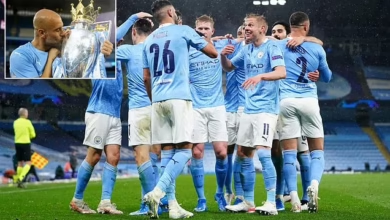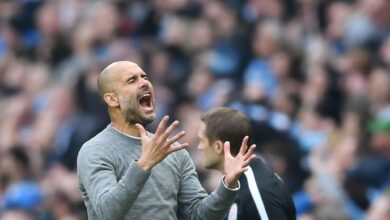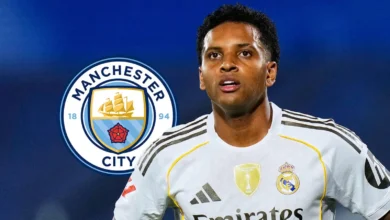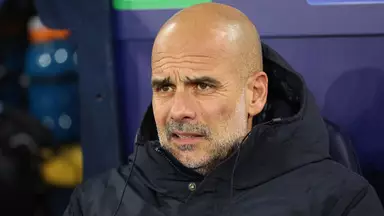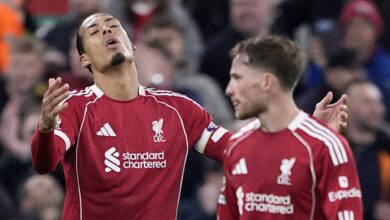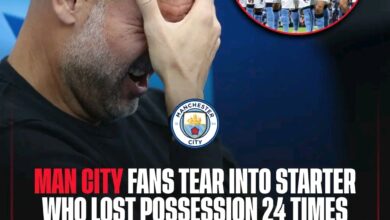Transfer Market Dynamics: How Manchester City’s Savinho Situation Could Impact Liverpool’s Summer Plans

The summer transfer window has always been a period of intense speculation, strategic maneuvering, and calculated risks. As we approach the final stretch of the 2025 transfer period, with the deadline set for September 1st, a complex web of potential moves is beginning to emerge that could significantly impact multiple Premier League clubs. At the center of this intricate dance lies a situation involving Manchester City, Real Madrid, and Liverpool FC that perfectly exemplifies the interconnected nature of modern football transfers.
Manchester City’s Brazilian winger Savinho has found himself at the epicenter of transfer speculation this summer, despite having only recently established himself at the Etihad Stadium. The 23-year-old, who arrived from Troyes in a move that was seen as part of City’s long-term planning, now appears to be attracting attention from other Premier League clubs, most notably Tottenham Hotspur.
Pep Guardiola’s reported reluctance to part ways with Savinho speaks volumes about the player’s perceived value within the City setup. The Spanish tactician has always been meticulous in his player assessments, and his desire to retain the Brazilian suggests that Savinho fits perfectly into his tactical philosophy. However, the harsh reality of modern football is that even the most well-laid plans can be disrupted by the financial muscle and persuasive power of competing clubs.
The interest from Tottenham, who recently visited the Etihad Stadium for their Premier League encounter, adds another layer of complexity to the situation. Spurs, under their current management, have been actively seeking to bolster their attacking options, and Savinho’s profile as a versatile, technically gifted winger makes him an attractive proposition. The north London club’s ability to offer regular first-team football, something that might be more challenging to guarantee at the star-studded Manchester City, could prove to be a decisive factor in any potential negotiations
The potential departure of Savinho from Manchester City has created ripples that extend far beyond the confines of English football. According to recent reports from ESPN and other reliable sources, City have identified Real Madrid’s Rodrygo as a potential replacement should they lose their Brazilian winger. This development has significant implications for the broader transfer market, particularly for clubs like Liverpool who have been monitoring the situation closely.
Rodrygo’s current predicament at Real Madrid is a fascinating case study in how even the most talented players can find themselves surplus to requirements due to circumstances beyond their control. The 24-year-old Brazilian international, who has consistently demonstrated his quality on both the domestic and international stage, has seen his role at the Santiago Bernabéu diminish following the high-profile arrival of Kylian Mbappé.
The French superstar’s signing last summer was undoubtedly a statement of intent from Real Madrid, but it has had unintended consequences for existing squad members. Rodrygo, who had previously established himself as a crucial component of Carlo Ancelotti’s tactical setup, has found himself increasingly marginalized. The need to accommodate Mbappé in the starting eleven has often resulted in Rodrygo being deployed in unfamiliar positions or, more frequently, relegated to the bench.
This situation was starkly illustrated in Real Madrid’s season opener against Osasuna, where Rodrygo was conspicuously absent from the matchday squad entirely. For a player of his caliber and previous importance to the team, such treatment suggests that a parting of ways may be beneficial for all parties involved. The Brazilian’s limited involvement in the Club World Cup earlier this summer further reinforced the perception that his future lies away from Madrid.
Liverpool’s reported interest in Rodrygo should come as no surprise to those who have followed Jürgen Klopp’s successor’s approach to squad building. The Merseyside club has always placed a premium on acquiring players who possess both technical ability and the mental fortitude to perform under pressure. Rodrygo, with his extensive experience in high-stakes matches for both club and country, fits this profile perfectly.
The timing of Liverpool’s interest is particularly intriguing when considered alongside their recent transfer activity. The departures of Darwin Núñez and Luis Díaz have left noticeable gaps in the squad’s attacking options, creating both a need and an opportunity for new acquisitions. Rodrygo’s versatility across the front line makes him an ideal candidate to fill these voids, capable of operating effectively on either flank or through the center when required.
However, Liverpool’s pursuit of Rodrygo faces several significant challenges, not least of which is the potential competition from Manchester City. Should City lose Savinho and subsequently make a concrete move for the Real Madrid winger, Liverpool would find themselves in direct competition with a club renowned for its financial resources and attractive proposition to players seeking immediate success.
The financial implications of such a transfer cannot be understated. Rodrygo, despite his reduced role at Real Madrid, remains one of the most promising young talents in world football. His valuation is likely to reflect this status, potentially pricing out clubs who are operating under stricter financial constraints. Liverpool, while certainly not impoverished, may find themselves unable to match the financial packages that other suitors might be willing to offer.
The interconnected nature f these potential transfers highlights a broader trend in modern football whereby the movement of one player can trigger a cascade of subsequent deals. The Savinho-Rodrygo situation is a perfect example of this phenomenon, demonstrating how clubs must constantly adapt their transfer strategies based on the actions of their competitors.
For Liverpool, the potential loss of Rodrygo to Manchester City would represent more than just a missed opportunity to sign a talented player. It would also strengthen a direct rival while leaving Liverpool’s own squad deficiencies unaddressed. This double negative impact underscores the importance of swift decision-making in the modern transfer market.
The situation also raises questions about the sustainability of Real Madrid’s current approach to squad management. While the signing of marquee players like Mbappé undoubtedly enhances the club’s global profile and commercial appeal, it can have detrimental effects on existing squad harmony and player development. Rodrygo’s potential departure would represent the loss of a player who has already proven his worth at the highest level, raising questions about the wisdom of such personnel decisions.
From a tactical perspective, Rodrygo’s potential integration into different systems presents interesting possibilities for all the clubs involved. At Liverpool, he would likely be deployed in a role similar to that previously occupied by Mohamed Salah or Sadio Mané, operating from wide positions but with the freedom to drift inward and contribute to central attacking play.
His pace and directness would complement Liverpool’s high-intensity pressing style, while his technical ability would provide the kind of individual quality that can unlock tight defensive setups. The Brazilian’s experience in Champions League football would also be invaluable for a club with European ambitions.
For Manchester City, Rodrygo would represent a different type of option compared to Savinho. While both players possess similar technical attributes, Rodrygo’s greater experience at the highest level and proven track record in crucial matches would make him an immediately impactful addition to Guardiola’s squad rotation.
The complex nature of modern transfers means that decisions are rarely made in isolation. Player agents, family advisors, and external consultants all play crucial roles in shaping the final outcome of negotiations. In Rodrygo’s case, his representation will be acutely aware of the interest from multiple Premier League clubs and will likely be working to create the most favorable outcome for their client.
The Brazilian’s international teammates and their experiences in English football may also influence his decision-making process. The Premier League’s reputation as the most competitive domestic competition in world football, combined with the financial rewards on offer, makes it an attractive destination for players seeking new challenges.
Any potential transfers involving players of Rodrygo’s caliber must also be considered within the context of Financial Fair Play regulations and other governing body restrictions. Both Liverpool and Manchester City have had to navigate these complex regulatory frameworks in recent years, and any major signings would need to be structured in compliance with existing rules.
The timing of these potential deals, so close to the transfer deadline, adds additional complexity to the financial arrangements. Clubs may need to be creative in their deal structures, potentially incorporating performance-related bonuses, future payment schedules, or player exchange arrangements to satisfy regulatory requirements.
The situation surrounding Rodrygo and the various interested parties bears similarities to several high-profile transfer sagas from recent years. The competitive nature of the Premier League has led to increasingly sophisticated recruitment strategies, with clubs often finding themselves in direct competition for the same targets.
Liverpool’s recent transfer history suggests a preference for players who can make an immediate impact while also possessing the potential for future development. Their successful acquisitions of players like Virgil van Dijk, Alisson Becker, and Fabinho demonstrate a willingness to invest significantly in the right targets when the opportunity arises.
As the transfer window deadline approaches, the pressure on all parties involved intensifies exponentially. The artificial urgency created by the September 1st cutoff often leads to accelerated decision-making and, occasionally, deals that might not have materialized under normal circumstances.
For Liverpool, the approaching deadline represents both an opportunity and a threat. While it may force Real Madrid to become more realistic in their valuation expectations, it could also lead to rushed decisions or missed opportunities if negotiations become protracted.
The potential transfer merry-go-round involving Savinho, Rodrygo, Liverpool, Manchester City, and Real Madrid perfectly encapsulates the interconnected nature of modern football transfers. What begins as Manchester City’s desire to retain a promising young winger could ultimately reshape the attacking options available to multiple top-tier clubs.
For Liverpool, the situation represents both an opportunity to acquire a world-class talent and a risk of seeing that same talent strengthen a direct rival. The club’s ability to navigate these complex negotiations while remaining true to their strategic principles will be crucial in determining their success in the remaining days of the transfer window.
The broader implications of these potential moves extend beyond the immediate tactical considerations. They highlight the ongoing evolution of the transfer market, where financial resources, timing, and strategic planning must all align perfectly to achieve desired outcomes. As the September 1st deadline approaches, all eyes will be on how these various threads come together to shape the final narrative of the 2025 summer transfer window.
The outcome of this particular saga may well serve as a defining moment for all the clubs involved, potentially influencing their trajectories for the upcoming seas







